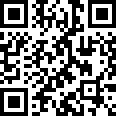When inspecting a batch of cartons, visual inspection can be used initially but must be performed in a certain order.
1. Check whether the carton has been bundled or damaged by collision, whether there is rain or dampness;
2. From the middle of the sampling bale, a cardboard box shall be paved to check the printing quality, die-cut shape, crease condition and appearance of the cardboard;
3. Open the carton, check the notch, joint size, cover sheet and fin quality;
4. Cut 80 x 30 mm cardboard, check the material and retort type;
5. Check the top and bottom overlap quality and carton size;
6. Seam bonding (seal, tape) quality.
Carton failure should be recorded, in order to confirm its non-standard, for further testing in the laboratory. For example, a rough check of the lack of cardboard weight (g/m2) can measure the thickness of corrugated paper or cardboard, because there is a certain relationship between paper thickness and basis weight. For precision inspections, use precision balances for testing under constant temperature and humidity conditions. If the technical specifications also specify the physical and chemical properties of the board, such as burst strength, compressive strength, etc., then it must be tested in accordance with the prescribed method. These experiments can be conducted in the user's laboratory. If the user does not have the means for testing, they can also commission a specialized testing agency to conduct the test.











